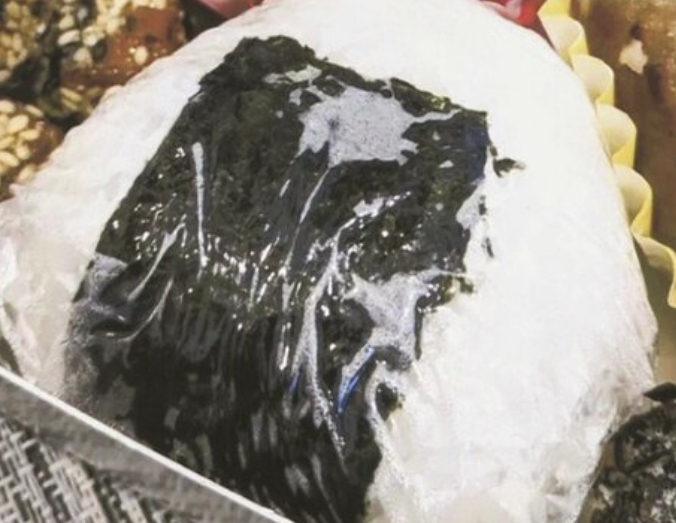
おにぎり ラップで握ったままNG?
✍️記事要約
ジメジメして暑いこの時期。細菌性食中毒は6月から夏にかけ急増します。
危険な“弁当おかず”は何があるのでしょうか?
弁当を作るときの注意点を、専門家に聞きます。
食中毒には「細菌性」「ウイルス性」「動物性自然毒」「寄生虫」などがありますが、梅雨の時期は特に細菌性の食中毒に注意が必要です。
細菌性の食中毒は、ウエルシュ菌・カンピロバクター・サルモネラ菌などが原因で起こります。
東北大学大学院の小坂健教授は、
「梅雨時期は特に細菌性の食中毒が増加。高温・多湿で細菌が増殖する条件が整っている」と話します。
東北大学大学院 小坂健教授:
温度が高くなると、増殖がすごく早くなるんです。
また水分が大事で、細菌が自由に使える水分が多ければ多いほど増殖しやすいので、この時期に増えてしまう形ですね。
管理栄養士の渥美まゆ美氏に、弁当を作る際のポイントを聞きました。
◆ごはん・おかずは仕切って入れる
おかずをそれぞれプラスチックカップなどで分けることで、菌の増殖を防止することができます。
◆ケチャップなどの調味料は別の容器で持っていき、後でかける
管理栄養士 渥美まゆ美氏:
菌は水分を媒体して増殖しますので、おかず同士の水分がくっつくと菌が爆発的に増えるリスクが上がってしまうんです。それを防ぐためにおかずはそれぞれ小分けにして入れるのが大事です。
◆おにぎりは握った後に蒸気を逃がす
ラップの中に蒸気が溜まっていると、菌が増殖してしまう可能性があります。
≪おすすめのおにぎりの作り方≫
〔1〕握る前に、ラップにご飯を広げて1分ほど粗熱をとる(冷やしすぎると固くなる)
〔2〕ラップでふんわりと握る
〔3〕ラップの左右を開き蒸気を逃がす
〔4〕冷めたら包む
最後にラップで全体を包む前に、蒸気をきちんと逃がすのがポイントです。
◆ブロッコリーは水分に注意
ブロッコリーは、茹でたり電子レンジで加熱調理をすることが多いため、小房に水分が多くなり雑菌が繁殖しやすいので、炒めて水分を飛ばすのがポイント。
管理栄養士 渥美まゆ美氏:
ブロッコリーは彩りで使いたくなるんですけど、小房に水分が溜まって雑菌が繁殖しやすい条件が整ってしまいますので、ピーマンなど表面がつるっとした食材を選ぶのも良いと思います。
恵俊彰:
あのサイズでも危険なんですか?
東北大学大学院 小坂健教授:
あまり温かいところで放置しておかなければ大丈夫ですし、菌が増えない状態にしておけばそれほど神経質になる必要はないんですが、少しでも菌がついているときにこの時期はすごく増殖しやすい。作るときに手洗いをきちんとするなどを徹底してもらえばいいと思います。
また、渥美氏によると「キュウリ」も水分を多く含むので、「ちくわキュウリ」は、「ちくわチーズ海苔」などに変更するのがベター。お弁当ではなく、朝ごはんや晩ごはんなどご家庭で楽しんでください。
◆ミニトマトはヘタをとってくぼみをよく洗う
ヘタのくぼみに菌がたまりやすいので、ヘタが付いたまま入れるのはNG
管理栄養士 渥美まゆ美氏:
彩りが良いのでヘタをつけて入れる方が多いですが、意外と雑菌の温床になりますので取って下さい。
また、半分に切って入れるのは水分が出るのでおすすめしません。
小さいお子さんには(誤嚥の危険もあり)丸のままは入れられないので、彩りとして入れるならバランなど他の物を代用してみてください。
答えは「ドライカレー」。
「炊き込みご飯」は具材から水分が出て傷みやすくなります。
「ドライカレー」はカレー粉に含まれるクルクミンに殺菌作用があるので、今の時期は「ドライカレー」がおすすめ。
カレー粉はご飯だけでなく、炒め物など他のおかずにも使えます。
管理栄養士 渥美まゆ美氏:
全て守ってくれるというわけではありませんが、抗菌的な作用が期待できるものは上手に活用すると美味しく食べられると思います。
【梅まぜご飯】
梅は抗菌作用があるが周りだけなので、混ぜ込んだ方がより良い
【から揚げ】
水分が少なく過熱されているので揚げ物は◎
【自然解凍できる冷凍食品(市販のもの)】
保冷剤代わりになる
【卵焼き】
中まで火を通す。だし巻き卵の場合は液体ではなく顆粒のだしを使う
【いんげんのおかか炒め】
野菜はツルツルしたものを使い、しっかり炒めて水分を飛ばす
〔1〕食べ物に細菌を「つけない」
〔2〕食べ物に付着した細菌を「増やさない」
〔3〕細菌を「やっつける」
具体的な対策としては・・・
▼手をよく洗う
▼傷があるときの料理は控える
▼弁当には加熱したものを入れる
▼弁当は暑くないところで保管
抗菌シートや保冷剤保冷バッグも、しっかり使ってください。
東北大学大学院 小坂健教授:
冷えた状態で保存ができれば一番いいですね。
この時期やはり最初にきちんと手を洗って、どうしても細菌はついちゃうんですけどそれをなるべく少なくする。
その後、温度管理をほったらかしにせず細菌を増やさない。加熱することで大体はやっつけられますので、そういうことを守ってもらえばそれほど神経質にならなくても大丈夫だと思います。
管理栄養士 渥美まゆ美氏:
やはり美味しくないと意味がないんですけれども、ある程度温度と水分に気をつけていただければポイントを押さえて安全に食べられるのではないかと思います。
(ひるおび 2024年6月21日放送より)
■英訳
This time of year is humid and hot, leading to a sharp increase in bacterial food poisoning from June through summer. What are the dangerous "lunch box foods"? Let's hear from experts about tips for making safe lunch boxes.
There are various types of food poisoning, such as bacterial, viral, animal natural toxins, and parasitic. During the rainy season, special attention is needed for bacterial food poisoning. Bacterial food poisoning is caused by bacteria like Clostridium perfringens, Campylobacter, and Salmonella.
Professor Ken Kosaka from Tohoku University Graduate School says, "Bacterial food poisoning increases especially during the rainy season because the high temperature and humidity create conditions for bacteria to proliferate."
Professor Ken Kosaka from Tohoku University Graduate School:
"Bacteria multiply very quickly as the temperature rises. The more moisture available, the easier it is for bacteria to grow, which is why we see an increase in this period."
We asked Mayumi Atsumi, a registered dietitian, for tips on making safe lunch boxes.
◆ Separate rice and side dishes
By using plastic cups to separate side dishes, you can prevent bacterial growth.
◆ Carry condiments like ketchup in separate containers and add them later
Bacteria proliferate through moisture, so when side dishes' moisture comes into contact, the risk of explosive bacterial growth increases. Separating the side dishes helps prevent this.
◆ Allow steam to escape from rice balls after forming them
If steam accumulates in the wrap, it can promote bacterial growth.
≪Recommended method for making rice balls≫
1. Spread rice on the wrap and let it cool for about a minute before forming (don't cool too much as it will harden).
2. Form the rice ball gently with the wrap.
3. Open the sides of the wrap to release steam.
4. Wrap once cooled.
Releasing the steam before wrapping fully is crucial.
◆ Be cautious of moisture in broccoli
Since broccoli is often boiled or microwaved, the florets can retain moisture, making it prone to bacterial growth. Stir-frying to reduce moisture is key.
Mayumi Atsumi, Registered Dietitian:
"Although broccoli adds color, the florets can hold moisture, creating conditions for bacteria to grow. Choosing vegetables with smooth surfaces like bell peppers is also a good idea."
Shunsho Megumi:
"Is it dangerous even at that size?"
Professor Ken Kosaka from Tohoku University Graduate School:
"As long as it's not left in a warm place, it's fine. Preventing bacterial growth reduces the need to be overly cautious. Ensuring proper hand washing while preparing food is important."
According to Atsumi, cucumbers also contain a lot of moisture, so it's better to replace "cucumber-stuffed fish cakes" with "cheese-stuffed fish cakes" or similar options. Enjoy cucumbers at home for breakfast or dinner instead.
◆ Remove the stems from cherry tomatoes and wash the hollows well
Bacteria can accumulate in the hollows of the stems, so do not include them with the stems attached.
Mayumi Atsumi, Registered Dietitian:
"While many leave the stems for aesthetic purposes, they can harbor bacteria. Also, cutting them in half releases moisture, so avoid this. For small children, avoid whole tomatoes due to choking hazards and use other colorful substitutes like bento dividers."
The answer is "dry curry." "Mixed rice" is more likely to spoil due to moisture from the ingredients. Dry curry is recommended because curcumin in curry powder has antibacterial properties. Curry powder can also be used in stir-fries and other dishes.
Mayumi Atsumi, Registered Dietitian:
"While it doesn't prevent everything, using antibacterial ingredients wisely can help you enjoy your food safely."
【Ume-mixed rice】
Ume (plum) has antibacterial properties, so it's better to mix it into the rice rather than just placing it on top.
【Fried chicken】
Fried foods with less moisture are good options.
【Commercially available frozen foods that can be thawed naturally】
These can also serve as ice packs.
【Tamagoyaki (Japanese rolled omelet)】
Make sure it's cooked thoroughly. Use granulated dashi instead of liquid for dashi-maki tamago.
【Green beans with bonito flakes】
Use smooth vegetables, and stir-fry well to remove moisture.
1. Prevent bacteria from getting on the food.
2. Prevent bacteria on food from multiplying.
3. Eliminate bacteria.
Specific measures include:
- Wash hands thoroughly.
- Avoid cooking if you have cuts.
- Use cooked ingredients for lunch boxes.
- Store lunch boxes in cool places.
- Use antibacterial sheets, ice packs, and insulated bags properly.
Professor Ken Kosaka from Tohoku University Graduate School:
"Storing food in a cool state is ideal. Start by washing hands thoroughly to minimize bacteria. After that, maintain temperature control to prevent bacterial growth. Most bacteria can be eliminated by heating. Following these measures can reduce the need to be overly cautious."
Mayumi Atsumi, Registered Dietitian:
"Food must taste good, but paying attention to temperature and moisture can help you safely enjoy your meals."
(From "Hiruobi," aired June 21, 2024)
◇ ◇ ◇
